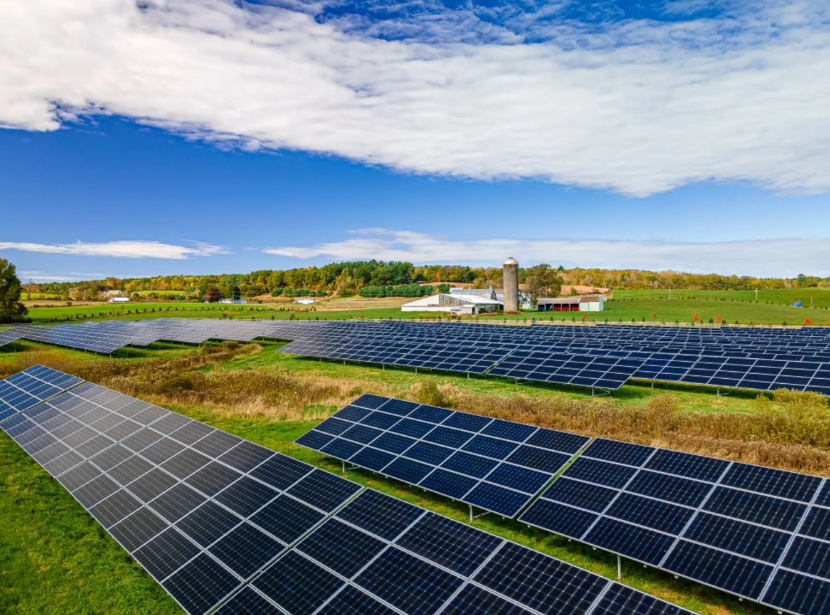Demystifying Community Solar: A Sustainable Energy Solution for Modern Living

As global energy dynamics shift, community solar emerges as a beacon of innovation, reshaping how individuals and communities interact with clean energy. Community solar offers a way to partake in solar energy generation without requiring personal rooftop installations; community solar provides an inclusive platform that caters to various living circumstances and financial situations, thus driving the collective move towards sustainable living.
At its essence, community solar is a collaborative model that democratizes access to solar energy. It is the perfect solution for those who either lack the space or capital for personal rooftop panels or prefer a more communal approach to energy production. Community solar enables widespread participation in renewable energy initiatives by allowing individuals and businesses to benefit from a more extensive, shared solar array. This model is gaining traction as a critical player in the energy transition, bridging the gap between solar accessibility and the public.
How Community Solar Projects Work
To participate in a community solar program, one must subscribe to join a project that typically involves a large solar farm. These subscriptions allocate a portion of the energy produced to each member, resonating with the ethos of shared resources. This method is transformative, minimizing the individual financial hurdles often associated with going solar. It also allows renters, city dwellers, and those with unsuitable roofs to utilize solar energy – crucial factors in urbanized regions where renewable energy options might be limited.
Environmental Impact of Community Solar
Adopting community solar is a potent step toward reducing one’s environmental impact. The community-based approach ensures that every kilowatt-hour produced is a step away from fossil fuels and toward a greener planet. By collectively creating a demand for solar energy through community solar projects, communities play an influential role in reducing emissions and pushing the energy sector toward a more sustainable trajectory. The collective effort benefits the environment and contributes to public health by reducing pollution.
The Economics of Joining a Community Solar Project
An alluring aspect of community solar is the potential for economic gains. Members of these initiatives often find that the cost savings on their electricity bills and the security of a more predictable energy expense can create tangible financial benefits. Community solar is vital in a society that values pragmatic and cost-effective solutions to everyday issues. Through shared resources, community solar empowers households and local economies with new opportunities for prosperity and growth, enabling more significant numbers of people to participate in the clean energy revolution.
Legislation and Community Solar
Legislation plays a critical role in the proliferation of community solar projects. Recognizing its benefits, many governments are implementing policies encouraging community solar growth, such as financial incentives or simplified application processes. States across the U.S., for instance, have established a range of programs to support the adoption of community solar, from tax credits to grants. These legislative initiatives make solar power more attainable for communities, fostering a supportive structure for renewable energy adoption at all levels of society.
Choosing the Right Community Solar Provider
When venturing into community solar, selecting the right provider is crucial. A transparent and reliable provider ensures participants a smooth experience and bolsters project confidence. Factors such as the provider’s sustainability practices, user testimonials, and how they structure subscriptions are essential when assessing a potential community solar program. This thoughtful consideration guarantees subscribers maximize their investment benefits and support solar projects that align with their environmental and financial goals.
Consumer Perspectives on Community Solar
The shift to community solar is often motivated by the positive experiences of current subscribers. A pervasive sense of community and the tangible benefits of energy savings and environmental contribution contribute to a virtuous cycle of advocacy and participation. Subscribers value the move to a more autonomous and self-reliant energy consumption model, which fosters local energy resilience and a stronger sense of agency regarding renewable energy choices and consumption.
Community Solar and Grid Resilience
Distributed energy resources like community solar enhance grid resilience and create a more robust energy infrastructure. Through a network of solar arrays, community solar can provide a necessary buffer during times of peak demand or unexpected grid disruptions. Moreover, these projects encourage the development of microgrids and other localized energy solutions, leading to a more adaptive and resilient power system capable of withstanding the challenges posed by an evolving climate and shifting energy needs.
Advancements in Community Solar Technology
The progress of community solar technology has yet to be yielded, as seen in the continual development and implementation of more efficient photovoltaic cells and more intelligent energy management systems. Furthermore, cutting-edge energy storage innovations are revolutionizing how solar power is collected and used, enhancing viability for broader adoption. As the backbone of community solar, these technological advancements ensure that the solar industry’s future is both bright and viable.
Getting Involved in Community Solar
Becoming a part of a community solar project is not merely about gaining personal benefit; it’s a commitment to a collective vision of a more sustainable world. By researching opportunities, engaging with local groups, and advocating for policy support, individuals can directly influence the direction of the renewable energy landscape. Participation in community solar reflects an investment in renewable energy and represents a stance on social responsibility and environmental stewardship.




